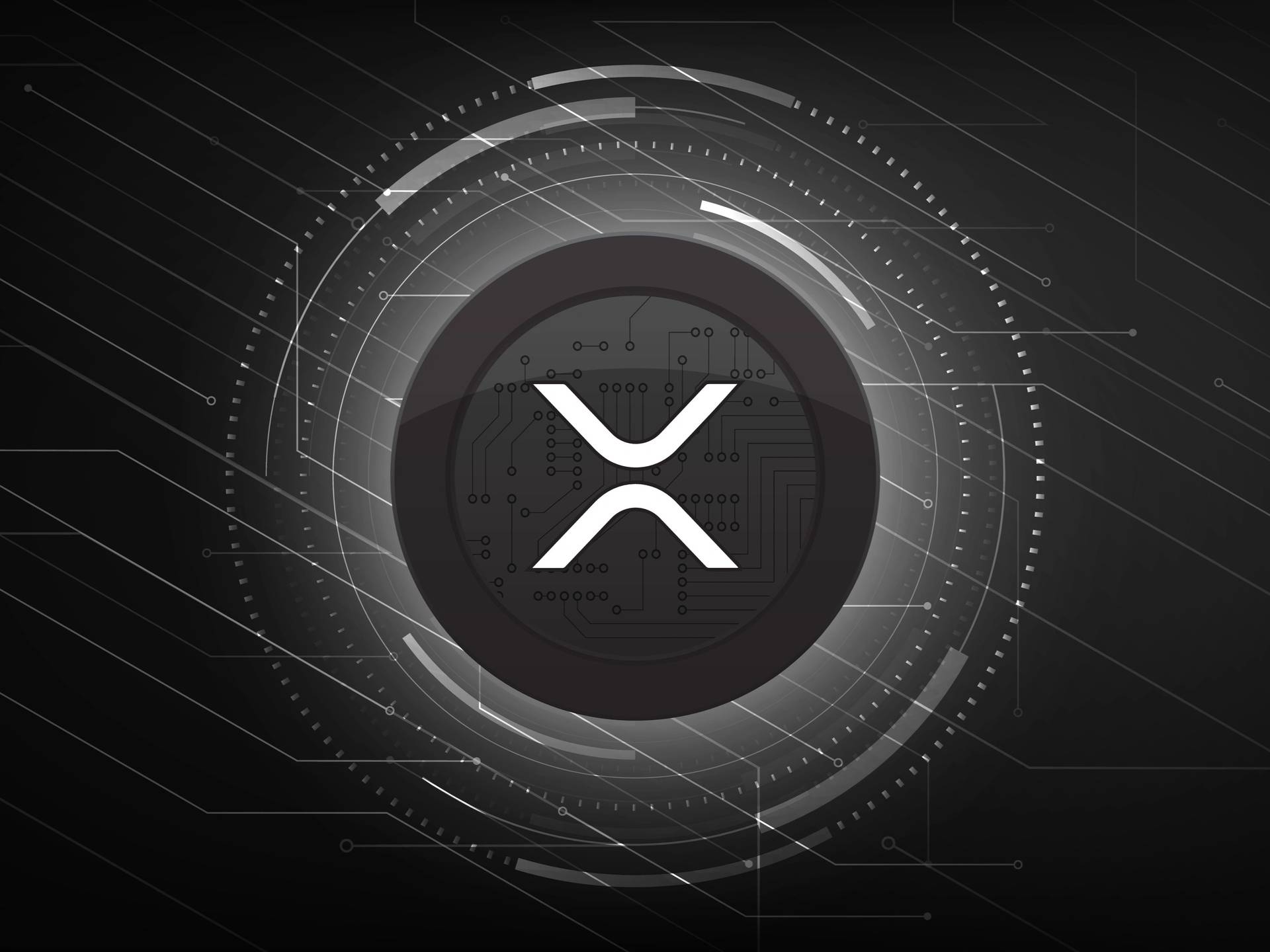订阅 wiki
Share wiki
Bookmark
XRP
XRP
XRP 是 Ledger XRP 区块链 的 加密货币,由 Ripple Labs 开发。XRP 用于在世界任何地方进行付款和收款。它也被一些电子商务网站接受。
XRP 在 Ripple 产品中用于促进不同货币之间的快速转换。XRP Ledger 是一个旨在帮助银行和公司进行快速且廉价交易的平台。[1] [2]
概述
XRP是瑞波网络上的原生加密货币,并且一直以市值位居前10名的加密货币之列。XRP是一种加密货币,它运行在XRP账本上,该账本是由Jed McCaleb、Arthur Britto和David Schwartz设计的区块链。McCaleb和Britto后来创立了瑞波,并使用XRP来促进网络上的交易。
瑞波实验室于2015年10月更名为瑞波。此后,在描述公司、网络、XRP账本和XRP本身时,术语的互换使用给加密货币领域的新手和老手都造成了困惑。[3][4][5]
历史
2011
Jed McCaleb与David Schwartz和Arthur Britto共同开始开发一种数字货币系统(XRP账本)。他们试图创建一个更可持续的价值传输系统。 [6]
2012
XRP账本推出了其原生货币XRP。到6月,Schwartz、McCaleb 和Britto 完成了代码开发,账本也已完成。XRP账本上线后,80%的XRP被赠予一家新公司,该公司旨在为数字资产构建用例——最初名为NewCoin,后迅速更名为OpenCoin。
2013
XRP于2013年1月由OpenCoin Inc.创建。
2016
Ripple Labs 和 Jed Mccaleb 达成协议,以防止大量抛售 McCaleb 的 XRP,并对其转售施加多项限制。
2017
2017年5月,Ripple承诺将550亿XRP置于安全托管账户中,以确保任何给定时间的XRP供应量,该操作于2017年12月完成。[13]
Ripple声明:
“此举强调了Ripple致力于建立XRP流动性以及健康且值得信赖的市场。从长远来看,数字资产的价值将由其效用决定。XRP已成为唯一具有明确机构用例的数字资产,旨在解决银行、支付提供商和企业面临的数万亿美元的问题——全球支付和流动性挑战。”
2020
XRP Ledger (XRPL) 基金会于 2020 年 9 月成立,从 Ripple、Coil 和 GateHub 筹集了 550 万美元。XRPL 基金会是一个独立的非营利实体,其使命是加速去中心化 XRP Ledger 的开发和采用。[12] XRP Ledger 基金会顾问 Bharath Chari 说:
“基金会非常乐意与生态系统中的利益相关者合作,以进一步创新和使用 XRP Ledger。我们致力于为开发者生态系统的发展提供全力支持。”
2021
在2021年第四季度,按照之前的季度安排和官方托管协议,共有30亿XRP从托管中释放(每月10亿)。本季度总共有24亿XRP被退回,并随后被放入新的托管合约中。
2022
2022年11月,Ripple发布了一份“监管白皮书”,向英国立法者和监管机构就如何监管加密货币行业提出了建议。
该白皮书强调了英国发展其加密资产领域的潜力,并提出了三项主要建议:包容性的监管框架、增加监管资源和协调,以及对公众进行有关该行业的教育。Ripple将英国的努力与其他司法管辖区进行了比较,并呼吁建立资源充足的监管机构。
该公司还强调需要改善数字资产教育,并消除对该行业的负面描述。 [20]
2023
2023年7月13日,美国地方法院法官Analisa Torres在证券交易委员会于2020年提起的诉讼中裁定公司胜诉。
根据7月13日提交的文件,Torres法官已批准Ripple Labs的简易判决,声明XRP代币不是证券。[18]Larsen 在X上对SEC撤诉一事发表了评论:[25]
"在过去的三年里,我们看到了一个流氓行政州,需要为其行为负责——不仅要调查导致这些毫无根据的主张的利益冲突,还要调查美国如何积极摧毁其作为全球创新之家的地位,导致数千个工作岗位转移到海外。"
2025
2025年5月22日,Volatility Shares 宣布在美国推出首个 1 倍 XRP 期货 ETF。该 ETF 旨在为投资者提供 XRP 期货合约的敞口,允许他们推测 XRP 的未来价格走势,而无需直接持有该加密货币。该 ETF 的推出标志着加密货币市场的一个重要里程碑,因为它为机构和散户投资者提供了获得 XRP 敞口的新途径。 [26] [27]
此外,CME XRP 期货的首次亮相交易量显著,日交易量达到 1500 万美元,这激发了人们对加密货币领域进一步 ETF 批准的希望。这一发展被视为朝着更广泛地接受 XRP 并将其整合到传统金融市场迈出的积极一步。 [28]
法律问题
Ripple Labs Inc. 解决刑事调查
2015 年 5 月,Ripple Labs Inc. 及其全资子公司 XRP II LLC(前身为 XRP Fund II LLC)同意通过一项和解协议来解决一项刑事调查,该协议要求采取一系列实质性补救措施,包括将 Ripple 的部分虚拟货币业务迁移到一家独立实体、公司持续配合其他调查、确保未来遵守联邦法律的广泛补救框架,以及总计 70 万美元的没收和罚款。美国加利福尼亚州北区检察官 Melinda Haag、美国财政部金融犯罪执法网络 (FinCEN) 主任 Jennifer Shasky Calvery 以及美国国税局 (IRS) 刑事调查部门主管 Richard Weber 宣布了这一消息。[16]
SEC 指控 Ripple 及其两名高管
2020 年 12 月,美国证券交易委员会 (SEC) 宣布对 Ripple Labs Inc. 及其两名高管(同时也是重要的证券持有人)提起诉讼,指控他们通过未注册的持续数字资产证券发行筹集了超过 13 亿美元。
该诉讼称,Ripple 从 2013 年开始,通过向美国和全球的投资者出售名为 XRP 的数字资产,以未注册的证券发行方式筹集资金。Ripple 还被指控分发了数十亿 XRP,以换取非现金对价,例如劳务和做市服务。[15]
Ripple和SEC的最终简报
在2022年12月,Ripple和美国证券交易委员会(SEC)互相指责对方曲解法律,因为他们争论XRP(世界第七大加密货币)是否属于证券。
SEC于2020年12月起诉Ripple及其现任和前任首席执行官,指控他们自该代币创建以来一直在进行13亿美元的未注册证券发行。
最后一轮寻求即决判决的简报使该案件更接近于一项裁决,该裁决可能进一步界定哪些数字资产在美国被视为证券。Ripple辩称,SEC寻求裁定XRP属于投资合同,但没有任何合同、任何投资者权利和任何发行人义务。 [16] [17]
法官裁定 XRP 不是证券
2023 年 7 月 13 日,法官 Analisa Torres 在一起由证券交易委员会于 2020 年提起的案件中做出了有利于该公司的裁决。根据 7 月 13 日提交的文件,Torres 法官已批准 Ripple Labs 的简易判决,声明 XRP 代币不是证券。[18]
美国证券交易委员会的诉讼旨在迫使 Ripple 停止提供其 XRP 代币,理由是 XRP 是一种证券,因此需要额外的监管。根据法庭文件:
“被告关于简易判决的动议在程序化销售、其他分配以及 Larsen 和 Garlinghouse 的销售方面获得批准,在机构销售方面被驳回。”
消息传出后,该代币在同一天内上涨了 30% 以上。
纽约一家法院裁定,Ripple 在交易所和通过算法出售 XRP 代币不构成投资合同,但机构销售代币违反了联邦证券法。法院在一项命令中公布了结论,该命令部分批准了美国证券交易委员会针对区块链平台的具有开创意义的案件中的简易判决动议。
美国证券交易委员会于 2020 年起诉该公司及其高管首席执行官 Brad Garlinghouse 和联合创始人 Christian Larsen,指控其在提供价值约 13 亿美元的代币之前未能将 XRP 注册为证券。[19]
根据纽约南区美国法院的命令,Ripple 首先直接向机构买家、对冲基金和其他方出售了价值约 7.289 亿美元的 XRP。
该命令称,这些“机构销售”构成了未注册的投资合同的发行和销售,违反了联邦证券法,因为它发现投资者会购买 XRP,期望他们能从 Ripple 的工作中获利。该命令称,Ripple 将从机构销售中获得的资金用于“通过开发 XRP 的用途和保护 XRP 交易市场来促进和增加 XRP 的价值”。法院批准了美国证券交易委员会关于简易判决的动议,因为它适用于机构销售,否则将被驳回。
通过交易所和算法进行的 XRP“程序化销售”不符合证券销售的条件,因为美国证券交易委员会无法明确表示投机投资者有“合理的利润预期,这些利润来自他人的创业或管理努力”。
该命令称:“没有证据表明,通常不太成熟的投资者合理程序化买家,具有相似的“理解和期望”,并且可以梳理美国证券交易委员会强调的多个文件和声明,其中包括来自 Ripple 演讲者(具有不同级别的权力)在长达八年的时间里在许多社交媒体平台和新闻网站上的声明(有时不一致)。”
该命令称,Larsen 和 Garlinghouse 自己出售 XRP 也属于这一类,以及其他分配。Ripple 关于代替“程序化销售”、其他分配以及 Larsen 和 Garlinghouse 的销售的简易判决动议获得批准。
美国证券交易委员会提出的另一项关于对这两位高管的“协助和教唆索赔”的简易判决动议被驳回,因为法院认为“尚不清楚 Larsen 和 Garlinghouse 是否知道或鲁莽地无视证券法,而不是其他监管制度下的法律,适用于 XRP。”消息传出后,XRP 的价格上涨了 28%。
Garlinghouse 在该命令发布后发推文称:“我们在 2020 年 12 月说过,我们站在法律的正确一边,并且将站在历史的正确一边。感谢所有帮助我们做出今天决定的每个人——这是一个为了美国所有加密货币创新的决定。更多内容即将推出。”[19]
SEC上诉被驳回
2023年10月3日星期二,地区法官Analisa Torres驳回了美国证券交易委员会(SEC)对瑞波实验室有利的2023年7月13日简易判决的上诉请求,该判决认定XRP代币不是证券。
法官在周二的一份简短裁决中表示,SEC未能满足法律规定的举证责任,即证明存在具有决定性的法律问题或存在重大意见分歧。法官将其他仍需解决的问题的审判日期定为2024年4月。消息传出后,XRP上涨了5%。[21] [22]
"SEC关于中期上诉认证的动议被驳回,SEC关于暂缓执行的请求因失去意义而被驳回。"
SEC撤销对Ripple高管的诉讼
2023年10月19日,美国证券交易委员会(SEC)撤销了对Ripple Labs高管Chris Larsen和Brad Garlinghouse的协助和教唆索赔,此前SEC起诉这家区块链公司违反了美国证券法。根据周四在纽约提交的法庭文件显示。Ripple Labs首席法务官Stuart Alderoty在X上写道:[23][24]
"SEC对Brad和Chris提起个人诉讼是一个严重的错误——现在,他们已经屈服,撤销了对我们高管的所有指控。这不是和解。这是SEC的投降。"
架构
XRP的区块链运作方式与其他大多数加密货币略有不同。其他加密货币将其交易账本和验证过程开放给任何能够快速解决复杂方程式的人。但交易是安全的,因为大多数账本持有者必须同意验证才能添加它们。
XRP的Ripple网络在某种程度上集中了事物,并使用共识协议 - 虽然任何人都可以下载其验证软件,但它维护着独特的节点列表,用户可以选择这些节点来验证他们的交易,这取决于他们认为哪些参与者最不可能欺骗他们。
当新交易进入时,验证者每三到五秒更新他们的账本,并确保它们与其他账本匹配。如果存在不匹配,他们会停下来弄清楚哪里出了问题。这使得网络能够安全有效地验证交易,这使其优于比特币等其他加密货币。
挖掘 XRP - 预挖矿
没有人可以挖掘 Ripple,唯一的选择是先挖掘其他加密货币,然后寻找将 BTC 转换为 XRP 的交易所。
XRP 是“预挖矿”的,这意味着 XRP 账本创建了 1000 亿个单位,然后定期公开发布。
Ripple 拥有流通中的一部分 XRP,这是一种激励,有助于 加密货币 随着时间的推移而增长并取得成功。另一部分 XRP 被保留,以便通过销售定期释放到市场。[2]
这导致人们担心一次性释放大量 XRP 可能会稀释已经流通的其他 XRP 的价值,因为赋予任何货币价值的部分原因是其相对稀缺性。
代币经济学
2017年12月7日,Ripple Labs 完成了在 XRP 账本(XRP 的原生区块链)的托管账户中锁定 550 亿 XRP。此后,为了在维持和增加流动性的同时增加流通供应量,采取了一项全面的策略。
XRP的创建
2012年6月2日,XRP账本的最初三位开发者之一亚瑟·布里托创造了1000亿个XRP。其中20%分配给了创始人。2017年,Ripple将550亿个XRP锁定在一系列托管账户中,每月向公司释放10亿个XRP,以提高XRP供应的可预测性。
在月末,会为剩余的XRP创建一个新的托管账户,并在发布计划中增加一个月。[7]
XRP的通货紧缩
作为一种保护XRP账本免受垃圾邮件攻击的机制,每笔交易都会产生少量交易成本,然后将其销毁。因此,XRP略有通货紧缩。此交易成本因交易对系统造成的负载或交易类型而异。但是,这些成本仍然非常不显着,因为典型的支付仅需几分之一美分,或0.0004 XRP。预测显示,XRP的供应量最多需要70,000年才能耗尽[8]。
用例
XRP可以像任何其他数字货币一样使用,无论是用于交易还是作为潜在的投资。RippleNet也可以用于处理其他类型的交易,例如兑换货币。
一种替代通过银行或货币兑换所将美元兑换成欧元的方法是,首先在Ripple网络上将美元兑换成XRP,然后用这些XRP购买欧元。这可能是一种更快、更便宜的方法,费用低于银行和汇款机构收取的费用。[1]
- Moneygram International Inc. 是一家总部位于美国的汇款公司,是Ripple合作伙伴名单中最大的名字。这家金融服务公司在2021年3月结束合作之前,使用Ripple的产品进行跨境交易。[8]
- 2017年,Ripple与包括印度Axis Bank和Yes Bank、土耳其Akbank和西班牙BBVA银行在内的10家新银行签约。来自日本的47家银行组成的联盟加入了Ripple,来自美国和其他地区的其他57家大客户也加入了该平台。Kraken增加了四个不同的XRP交易对,包括XRP/CAD、XRP/JPY、XRP/EUR和XRP/USD,也推动了Ripple的发展。[9][10][11]
发现错误了吗?
